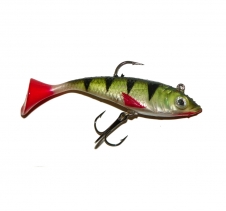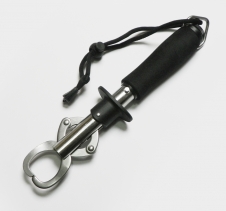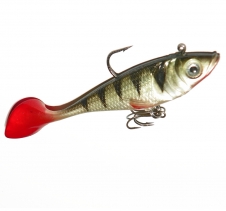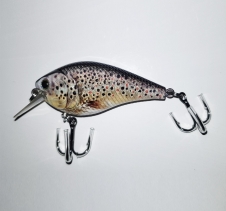Visit Our Online Store! $7 AusPost Parcel Post Delivery FREE Postage for orders $45 and over!
* Shipping rates above apply to Australian Customers only
Tracking Yellowbelly: Tactics for the popular native perch.
Fishing For Golden Perch. The Best Lures For Yellowbelly.
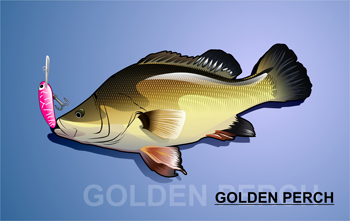 Golden Perch, or yellow belly as they are commonly referred to, are a native Australian perch like species, growing very large with a common size upwards of 30cm and a large wide body weight leading them to be nicknamed footballs by many people. Fishing for yellowbelly is normally best in cooler conditions, as in hot weather yellowbelly tend to stick to the coldest part of the waterbody, which happens to be the deepest. In weather around 20 to 25c, there is more chance of yellowbelly being either on the move or residing closer to the edge of riverbeds and lakes.
Golden Perch, or yellow belly as they are commonly referred to, are a native Australian perch like species, growing very large with a common size upwards of 30cm and a large wide body weight leading them to be nicknamed footballs by many people. Fishing for yellowbelly is normally best in cooler conditions, as in hot weather yellowbelly tend to stick to the coldest part of the waterbody, which happens to be the deepest. In weather around 20 to 25c, there is more chance of yellowbelly being either on the move or residing closer to the edge of riverbeds and lakes.Yellowbelly are a highly territorial fish, they tend to stick to one place at a time with a few weeds around them so they can hide away and enforce their dominance over the area. Any fish that enter territorial waters of yellow belly are quickly attacked, the yellow belly although large has a very strong swimming ability, and a hit on your lure from one can almost take the fishing rod straight out of your hand.
Most people use lures for golden perch. Depending on the availability of food to the yellowbelly in the waterbody, finding the correct lure can sometimes be difficult, they are known to hit basically all lures, but rarely all types at once. If you are kayak fishing in deep water, sinking a spin lure to the bottom of the water then using a slow retrieve can produce results, if this fails then blade lures can be tried. As most hard body lures tend to float slightly unless retrieved fast causing the front clear bib to sink the lure, they are normally best for slightly shallow water of around 1 to 1.5 meters. You can then vary the retrieve speed to gain more depth.
Blades can also be used from the side of lakes and rivers, retrieving a bit faster will stop the lure from scraping along the bottom, the most commonly used size of blade lures is 11 grams, and the preferred colours are a simple gold, silver and black. The imitated eyes on the lure should be striking or realistic, as when the blade passes, if the fish believes eye contact has been made it will quickly become territorial and tend to attack more, we find a radiant blue coloured eye section perfect for this effect.
When fishing for yellowbelly, bringing along a good range of lures is always best, and for those who are serious about catching yellowbelly on a regular basis, you can't go past a kayak or tinny boat for the ultimate method of catching lots of yellowbelly. The methods of catching fish vary between fishing from a vessel and fishing from land, but the general idea of getting a lure in front of a golden perch will by far outweigh the results you would get simply casting and retrieving with no plan of attack.
Note that state and territory regulations always restrict the size and bag limit (amount you are allowed to take) for keeping yellowbelly, always check your local state / territory guidelines for legal sized Yellowbelly / Golden Perch before taking them from any water source, they are native fish and are protected by these guidelines to ensure future survival, they are not always a size legal to take home. Smaller fish will be required to be returned to the water unharmed, which ensures the survival of these great Australian fish.
Follow us on twitter: @FishTackleLures or Google Plus: +FishingTackleLuresAU
View more articles in our Australian Fishing Guide.
Enter your email address below to be updated on new fishing articles, fishing lures and special offers:
We will only email once every two to four weeks at the most, usually every 2 months.
POPULAR PRODUCTS IN OUR ONLINE STORE


